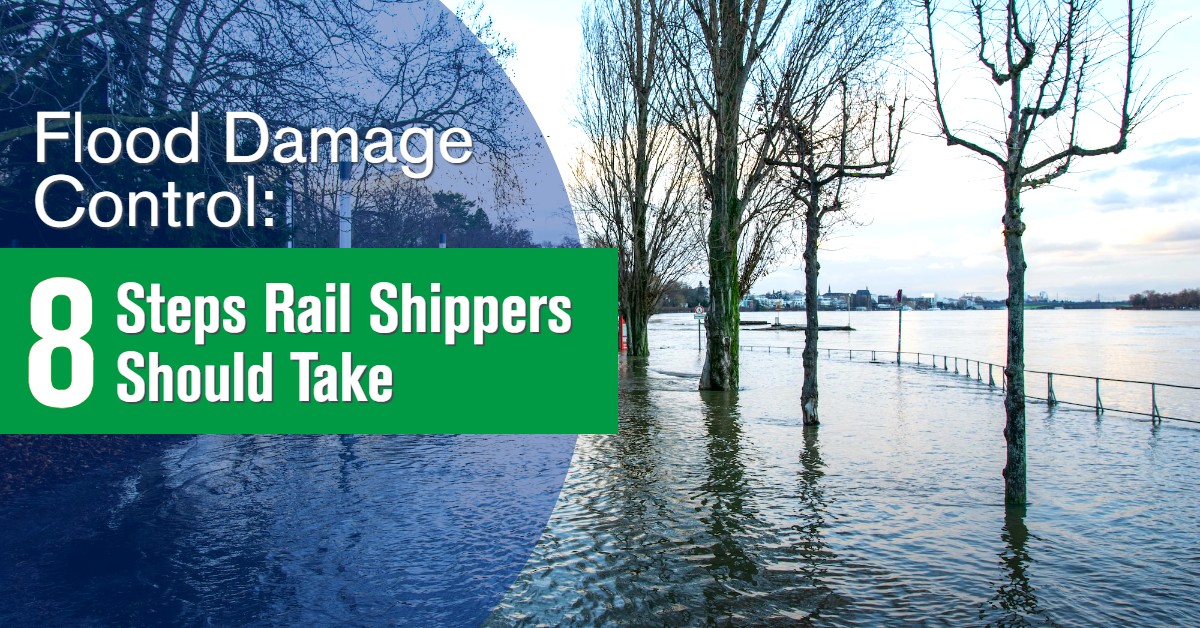In the first part of 2023, California experienced 31 atmospheric river storms in a matter of months, bringing record snowfall amounts, heavy rain and dangerous flooding to the state. Still to come is California’s ‘big melt,’ which is likely to result in additional flooding when dense snowpack thaws. But California isn’t the only state to see extreme weather events this year.
In April, Fort Lauderdale, Florida, saw severe storms and got nearly 26 inches of rain in a 24-hour period. It was a 1,000-year rainfall event that resulted in a flash flood emergency and even forced the airport to close due to flooding.
Later that month heavy rainfall in the Minneapolis area caused rivers to crest, created safety risks and left residents preparing for the worst flooding in nearly two decades.
Although these are some of the most extreme weather events so far in 2023, they aren’t the only areas to feel the impacts of severe storms, heavy rainfall and flooding. No area is ever immune to the effects of weather — and that means you need to be prepared.
Follow these tips before and after flooding to help keep your employees safe, minimize damage to rail cars, and help you get back in business quickly.
Before Heavy Rain, Snow Melt, Severe Storms and Flooding
- Divert rail cars. If you have advanced notice of severe storms, rising river levels, or potential flood zones, divert rail cars destined for your facility as soon as possible.
Why this step is important: Sending cars to an alternate location and reducing inventory levels at your plant will reduce the potential for mechanical damage that severe storms could cause to rail cars and will also protect the products inside.
- Notify the railroad. Submit any special service requests to the railroad as soon as possible, ideally three to four days before a severe storm or flooding is expected.
Why this step is important: The railroad can help you manage your inventory and divert cars.
- Communicate your plant operations plan. One to two days before heavy rains and flooding, let the railroad know if/when you plan to cease operations and/or evacuate the plant.
Why this step is important: Doing so will allow the railroad to place tracks out of service as needed and schedule rail cars appropriately to ensure resources are used effectively after the storm.
After Flooding
- Report track damage. Report any railroad tracks that are damaged and/or out of service to the railroad.
Why this step is important: Reporting out-of-service tracks is critical for safety.
- Provide a plant operations update. Let the railroad know the estimated time frame for repairs to your facility and when you plan to resume operations.
Why this step is important: An operations update will allow the railroad to know when to place tracks back in service and deploy rail cars as needed.
- Request resumption of rail service. Once repairs are complete and you know when your plant will resume operations, notify the railroad and ask them to resume rail service.
Why this step is important: Rail service won’t resume until you inform the railroad.
- Don’t move rail cars if water has reached the wheel bearing. Wait for the railroad to inspect the car and make sure it is safe to move.
Why this step is important: Moving a rail car that is under water can be a safety risk.
- Inspect rail cars. Per the American Association of Railroads (AAR) interchange rules, any rail cars damaged by flooding must undergo a joint inspection between the railroad’s mechanical team and personnel at your plant.
Why this step is important: Inspections ensure rail cars are safe to operate.
Steps for Union Pacific Customers
If you’re a Union Pacific Railroad customer, the following resources will help you prepare for and recover from flooding.
- The steps outlined on the Flood Planning and Recovery Page also apply to flooding. Visit the page to see which steps you should take as a Union Pacific customer. This includes links to report a service issue, which allows you to:
- Report damaged or out-of-service tracks
- Communicate the timetable for ceasing plant operation
- Provide estimated facility repair time and resumption of operations
- Request service to be resumed when repairs are complete
The page also includes information on requesting diversions and rail car inspections as well as a list of current embargoes.
- Customer Care and Support for 24/7 assistance specific to your shipments: 800-272-8777
- Response Management Communications Center (RMCC) to report emergencies: 888-877-7267
To learn more about how railroads take action when flooding happens, visit the AAR’s article on how freight railroads prepare for and respond to extreme water.
Share Your Story
If you have experienced flooding at your rail-served facility, send us an email to share your story or tips you have learned that can help others.
If you're interested in shipping by rail, answer a few questions and an expert will be in touch.
Related Articles:
- The Art of Loading a Rail Car
- 11 Train Facts that Could Save Your Life
- How to Clean and Inspect Rail Cars
- How to Keep Intermodal Shipments Safe
- The Best Railroad Resources
- What Are Railroads Doing About Climate Change?
- How Will the Infrastructure Law Impact Industrial Markets?
- Winter Weather Action Plan for Rail Shipping Safety
- Rail Crossing Safety: Fact or Fiction?
- Telematics and the Railroad: The Future of Shipment Visibility









